It has come to notice that Tesla supercharging in Australia is now costlier than its petrol equivalent. Tesla is gaining a reputation for its ability to meet high volume demands. A common issue around electric vehicles is its charging requirements. However, Tesla has been able to provide a solution to this dilemma. They have collaborated with multiple companies to form a charging network. In September we reported that Tesla provided power packs to 60 Electrify America stations. Electrify America is a company that provides the largest open DC fast charging networks in the United States of America. The company is a subsidiary of the Volkswagen Group of America. This was an example of Tesla shaking hands with rivals. This move helped increase the salability of their car.
Tesla’s Australia Website Claim of Supercharging Cost Less than Petrol Refuelling is Wrong
In Asia, Tesla has bolstered its network with 2000+ supercharger stations with 20,000+ superchargers. The charging network is often a selling point for Tesla. Here’s a look at Tesla’s website boasting their charging network
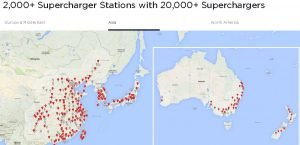
Tesla used its Supercharging network as a lure for buyers. Particularly in the early days after the brand arrived in Australia, in many cases offering free charging. The website portrays a graphic comparing supercharging and petrol refueling costs according to miles driven.
Supercharging Scene in Australia
Tesla has deployed multiple charging stations on the western coast of Australia. In 2019, Tesla had announced free unlimited supercharging for new Model X and Model S orders.
BREAKING: All new Model S and Model X orders now come with ⚡ free ⚡ unlimited ⚡ Supercharging ⚡
— Tesla (@Tesla) August 3, 2019
This was a clear move to increase sales. A move directed to entice people to prefer buying a Tesla. It clearly worked as Tesla sales have increased exponentially over the years. Of course, this isn’t the only reason. However, the idea of free charging does attract immense public attention. Tesla had provided this perk back in 2017. But Elon Musk had openly stated that the program wasn’t sustainable. Hence, they tweaked the perk. New models would then get up to 400kWh per year (about a thousand miles). This perk was used to promote initial car sales in Australia. The debate between electric and combustion cars has revolved around two primary points: Green energy and the economy of the car.
As much we’d like to believe most EV users do it for the environment, it may not be completely true. Large factions of EV users tend to use it for the long term benefits. These naturally include the higher efficiency of the car. Thus a move where charging is offered free up to 1000 miles per year certainly plays a role while purchasing. Beyond the free charging Tesla also assured that charging is cheaper than petrol refueling. Australia has significantly more destination charging stations compared to supercharging stations. The issue we are addressing concerns the supercharging only.
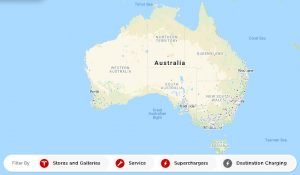
The Issue at Hand
As mentioned before, the economy is a factor when it is a debate of EV versus a Combustion car. Thus, Tesla uses the factor of supercharging cost less than refueling cost for sales. Below is a graphic displaying the comparison between supercharging a Model 3 for 100 miles and refueling an equivalent combustion car for the same distance.
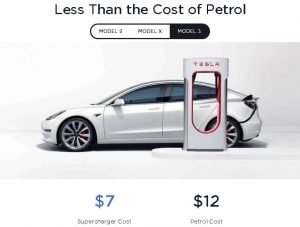
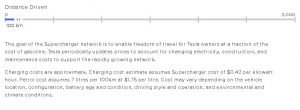
There are two major reasons why this comparison doesn’t hold up. First is the Supercharging Rates and second is Tesla’s Assumption for Combustion cars.
Supercharging Rates
The image also explains the figures used for the calculation. The issue lies here in these numbers. In Australia, Tesla has increased its charging rate to 52 cents per kWh. However, the site still uses the old cost i.e. 42 cents per kWh for calculation. It is a 24% hike in supercharging cost which has been neglected by the website. That means recharging even the most efficient Tesla Model 3 Standard Range Plus – which consumes 18.8kWh/100km, according to figures supplied to the government – would cost $9.78 per 100km using a Supercharger. Thus the cost increases by almost $3 per 100 km. It is important to note that the price rise was declared almost a month ago. We won’t go to the Teslas sold in this period as that would be unfair. However, it is a significant error.
Tesla’s Assumption for Combustion cars
Tesla assumes that an equivalent car consumes 7 liters per 100km at $1.75 per liter. On cross-checking with the numbers submitted to the government, we get a different result. A rival, BMW 330icosts $8.00 per 100km assuming an average cost of premium unleaded of $1.38, one sourced from the NSW Government’s Fuel Check website. That is 18% less than charging a Tesla. Furthermore, the BMW consumes 5.8 liters per 100 km, 20% less than Tesla’s assumption of 7 liters. Tesla does admit their assumptions may vary depending on the vehicle location, configuration, battery age and condition, driving style and operation, and environmental and climate conditions. Yet, the disparity in numbers isn’t negligible.
Let’s now compare a standard hybrid rival. Choose the hybrid-powered Lexus IS300h and that per-100km fuel cost drops to $6.76. This is about 31 percent less than the cost of a Tesla charged with a Supercharger. These are numbers submitted to the Australian authorities.
When we consider the actual numbers the scenario changes drastically. Drastically because the narrative put forth by Tesla is proven wrong. Table comparing the actual costs looks like this
| MODEL | COST ACC TO TESLA’S WEBSITE ($) | ACTUAL COST
($) |
DIFFERENCE
(excluding sign) |
| Tesla Model 3 | 7 | 9.78 | 2.78 |
| BMW 330i | 12 | 8 | 4 |
| Lexus IS300h | NA | 6.76 | NA |
Negligence or Manipulation?
According to me, this looks like negligence more than manipulation. Tesla’s claim holds true when we consider the cost of charging at home and at destination stations. Most Tesla destination chargers are also free and many households only pay 25-30c/kWh for electricity. Thus, it doesn’t look like a move to manipulate customers. However, we cannot excuse Tesla for using incorrect numbers for almost a month. We hope Tesla releases a statement clarifying this specific issue.














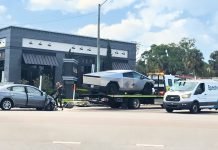
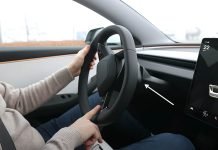
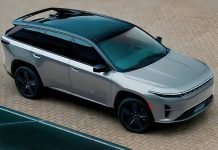


There’s the difference between cost per kWh at a Supercharger and at home. I don’t know about Australia prices for electricity but this is as if you were comparing the price for a coffee at e.g. Starbucks to the cost of a coffee at home.
How many people use Superchargers? I haven’t used remote charging in over a year.
My only problem with electric cars, electricity costs will go up, oil has gone down. The range sucks. I cannot get to see my kids, used to go for a day trip now 3-4 day trip. Mostly the more electric cars on the road means take a number and wait your turn to plug in for recharge, instead of fill and go, if there are 5 cars in front of you, it could be 4 hours before my turn. Hybrid cars are a thousand times better than 100% electric.